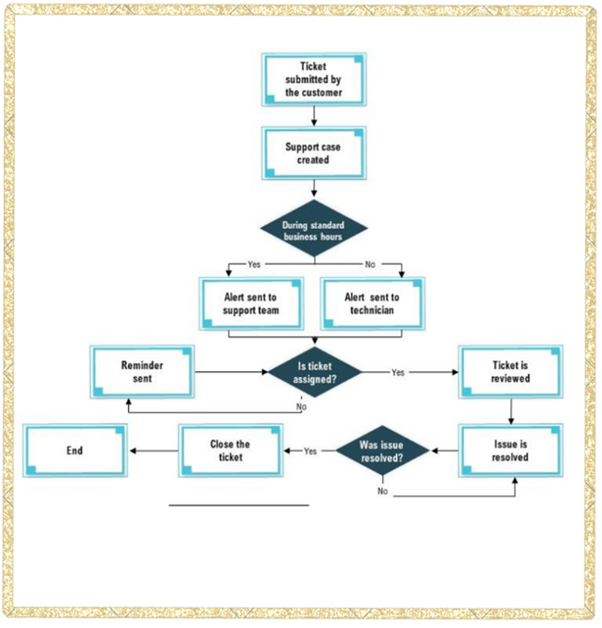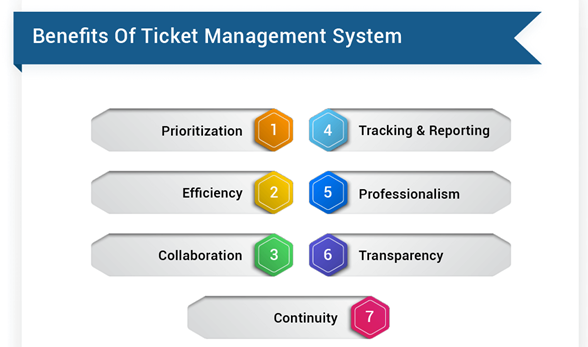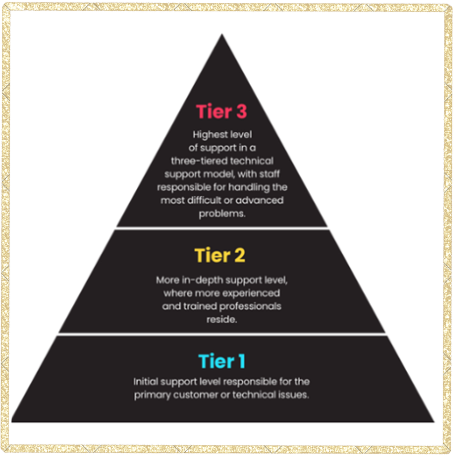A ticketing system, such as a Dynamic Tracking Tool, can be a powerful tool for MSO support teams, providing a centralized and efficient way to manage incidents and service requests. Here are some more details on the benefits.
- Organize and triage cases: With a ticketing system, MSO support teams can easily prioritize cases based on their priority, status, and other relevant information. This allows them to quickly identify and resolve critical issues before they become major problems.
- Automate distribution and assignment: A ticketing system can automate the distribution and assignment of incidents to the right department staff member. This ensures that incidents are quickly and efficiently handled by the most qualified support team members.
- Increase collaboration: A ticketing system can increase collaboration between customer service teams and other stakeholders. It allows for easy and quick ticket assignment, collaboration in resolving issues, and real-time changes.
- Consolidate support needs: Using a ticketing system consolidates all support needs in one place, providing a record of customer interactions stored in the system. This allows support teams to quickly and easily access customer history, track communication, and resolve issues more effectively.
- Dynamics Tracking Tool: This shows various reports, such as the Real-Time Tracking Report and Historical Data Report, which are provided to monitor and analyze tracking data efficiently.
Overall, a ticketing system can help MSO support teams to be more organized, efficient, and effective in managing incidents and service requests.

Benefits of a Dynamic Ticketing Management System

- Prioritization: A ticketing system efficiently prioritizes incidents based on their impact on the business and their urgency. This ensures critical issues are resolved quickly, minimizing downtime and maximizing productivity.
- Efficiency: A ticketing system streamlines the incident management process, reducing the time and effort required to handle incidents. It allows support teams to focus on resolving issues rather than spending time on administrative tasks such as logging incidents and updating users.
- Collaboration: A ticketing system enables collaboration between support teams, allowing them to share information and expertise to resolve incidents more efficiently. It also enables users to collaborate with support teams, providing real-time updates and feedback on the status of their incidents.
- Tracking & Reporting: A ticketing system provides detailed monitoring and reporting capabilities, allowing businesses to analyze incident data and identify trends and patterns. This information can be used to identify recurring issues, develop strategies to prevent incidents from occurring, and improve the overall quality of support services.
- Professionalism: A ticketing system provides a professional and consistent approach to incident management, ensuring that all incidents are handled promptly and efficiently. This helps to enhance the reputation of the support team and the business as a whole.
- Transparency: A ticketing system provides transparency in the incident management process, allowing users to track the status of their incidents in real time. It also provides visibility into the actions taken by support teams, enabling users to understand how incidents are being resolved.
- Continuity: A ticketing system provides continuity in the incident management process, ensuring that incidents are handled consistently and effectively across the organization. It also ensures that incident data is captured and stored in a centralized location, providing a comprehensive view of the incident management process.
A Support System Orbits Around 3-Tiered Support

Tier 1
Tier 1 tech support is typically the first level of technical support in a multi-tiered technical support model. It is responsible for handling basic customer issues and providing initial diagnosis and resolution of technical problems.
A Tier 1 specialist’s primary responsibility is to gather customer information and analyze the symptoms to determine the underlying problem. They may use pre-determined scripts or workflows to troubleshoot common technical issues and provide basic solutions.
If the issue is beyond their expertise, they may escalate it to the appropriate Tier 2 or Tier 3 support team for further investigation and resolution.
Overall, Tier 1 tech support is critical for providing initial assistance to customers and ensuring that technical issues are addressed promptly and efficiently.
Tier 2
Tier 2 support is the second level of technical support in a multi-tiered technical support model, and it typically involves more specialized technical knowledge and skills than Tier 2 support.
Tier 2 support is staffed by technicians with in-depth technical knowledge and experience troubleshooting complex technical issues. These technicians are responsible for providing more advanced technical assistance to customers, and they may use more specialized tools or equipment to diagnose and resolve technical problems.
Tier 2 support is critical for resolving complex technical issues and ensuring that customers receive high-quality technical assistance.
Tier 3
Support typically involves highly specialized technical knowledge and skills, and technicians at this level are often subject matter experts in their respective areas. They may be responsible for developing new solutions or workarounds for complex technical issues and providing training and guidance to Tier 1 and Tier 2 support teams.
In some cases, Tier 3 support may be provided by the product or service vendor, while in other cases, it may be provided by a third-party provider. The goal of Tier 3 support is to ensure that the most complex technical issues are resolved as quickly and efficiently as possible, minimizing downtime and ensuring customer satisfaction.
Overall, Tier 3 support is critical in providing advanced technical assistance and ensuring that the most complex technical problems are resolved effectively.
Determine The Importance of Tickets/Incidents/Issues/Cases
The first step in a support ticketing system is to determine the incident’s importance. This involves assessing the incident’s impact on the user and the business and assigning a priority level based on the severity of the issue.

- Receiving: The step is to receive the incident report from the user. This can be done through various channels, such as email, phone, or a web-based form.
- Validating: This step involves validating the incident and verifying that it is a valid issue that needs to be addressed by the Support team.
- Logging: Once the incident has been validated, it is logged into an incident application, which is used to track and manage it throughout the process.
- Screening: The next step is to screen the incident and determine the user’s symptoms. This involves asking questions to gather more information about the issue and to identify any patterns or trends that may help resolve the incident.
- Prioritizing: Once the symptoms have been identified, the next step is to prioritize the incident based on its impact on the user and the business.
- Assigning: After the incident has been prioritized, it is assigned to a support team that will handle it. If the support team cannot handle the incident, it is escalated to a higher-level tier.
- Escalating: If the incident requires more advanced expertise or resources, it is escalated to a higher-level tier where it can be resolved more effectively.
- Resolving: The support team or higher-level tier works on resolving the incident and provides updates to the user until the issue is resolved.
- Closing: Once the incident has been resolved, the ticket is closed by logging the resolution and changing the ticket status to indicate that the incident has been successfully resolved.
Summary
Ticketing systems are essential for businesses that want to manage customer service requests efficiently. These systems allow customers to submit service requests, track the progress of their requests, and receive updates when their requests are resolved. The ticketing system also enables businesses to assign service requests to the appropriate employees or teams and prioritize them based on urgency or severity. This helps streamline workflow and ensure service requests are addressed promptly and efficiently. Additionally, ticketing systems can provide valuable insights into customer behavior, allowing businesses to identify areas where they can improve their products or services.
Source: Read MoreÂ
